In the early 2000s, a 2,300-year-old intact mummy was discovered, described as “unwrapped” by Egyptian experts, and several locations have been revealed.
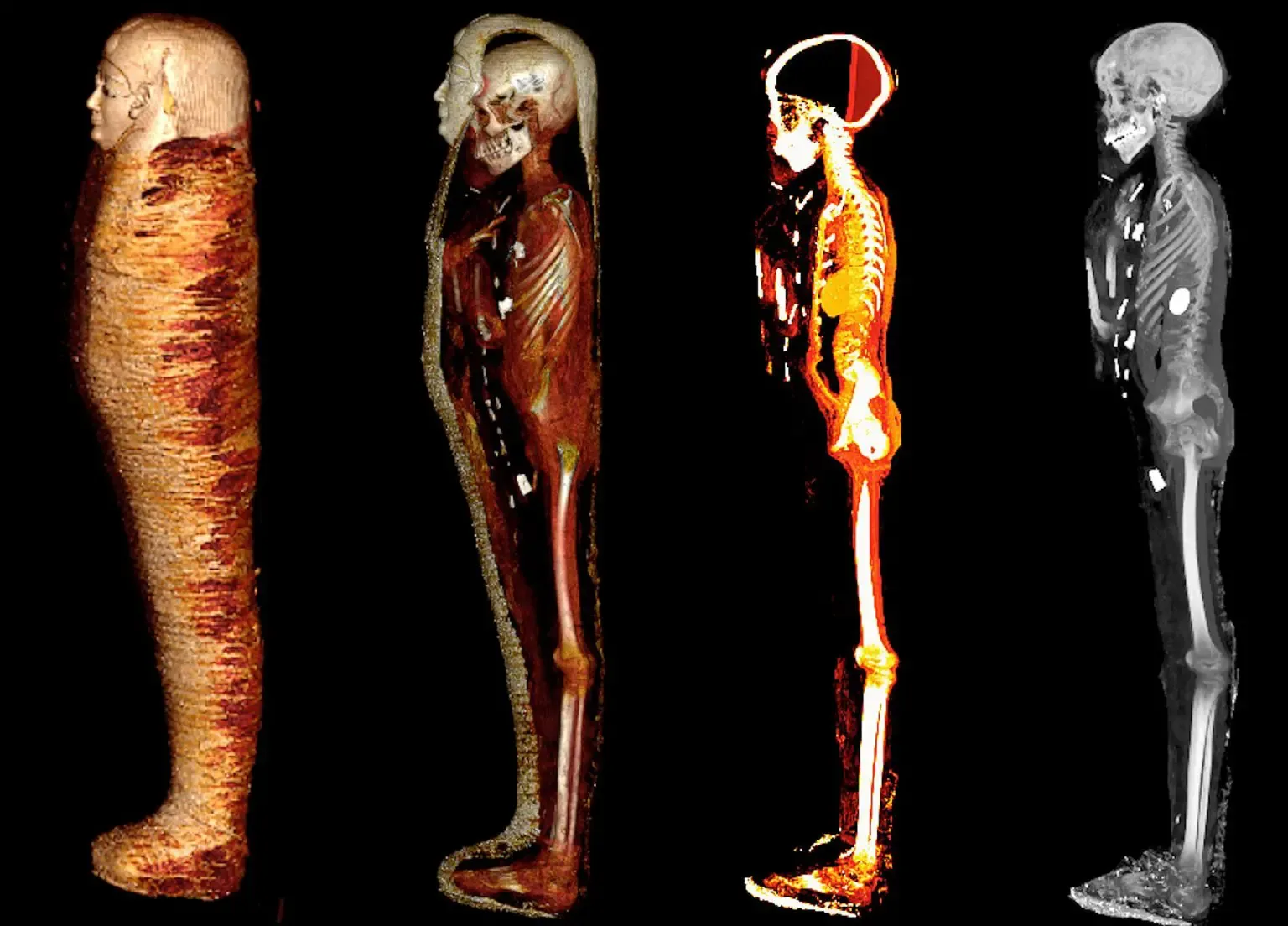
Researchers have utilized CT scans to gain insight into the anatomy of a high-status teenage boy who lived 2,300 years ago – an ideal comparison between investigating a mummy and not destroying it. This intact sarcophagus was found in southern Egypt in 1916, but until now it has been kept in a museum basement and has not been examined. The findings were published in the Journal Frontiers in Medicine.
The mummy, which is from the Ptolemaic period and was never opened before, was dressed in sandals and adorned with feathers as well as 49 amulets made of different types of gold to promote his bodily resurrection, Scientific Daily reported. These amulets were either placed on or inside the body, and included a two-finger amulet near the unconscious penis, a golden heart scarab in the thoracic cavity, and a golden tongue in the mouth.
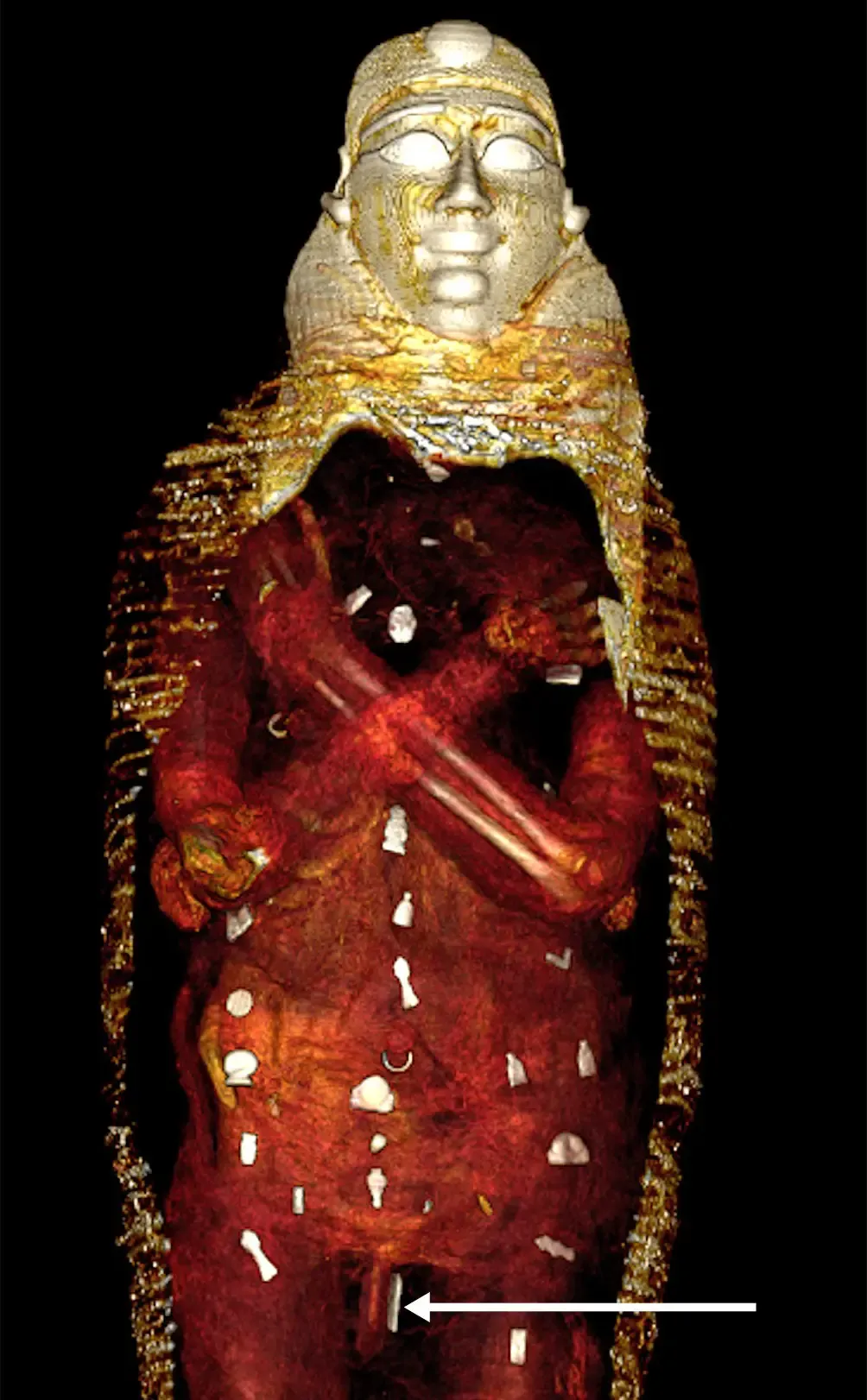
The explorer discusses the “Golden Boy” and his expedition findings which reveal ancient Egyptian beliefs about death and the afterlife. According to these spiritual beliefs, the essence of a person after death will seek an afterworld that resembles the earthly world.
However, delving into the afterlife in this new world was not guaranteed and required a traveler’s journey through the underworld and an individual’s last judgment. To ensure the loved one’s safe arrival to a pleasant destination, the family members and embalmers would make every effort possible.
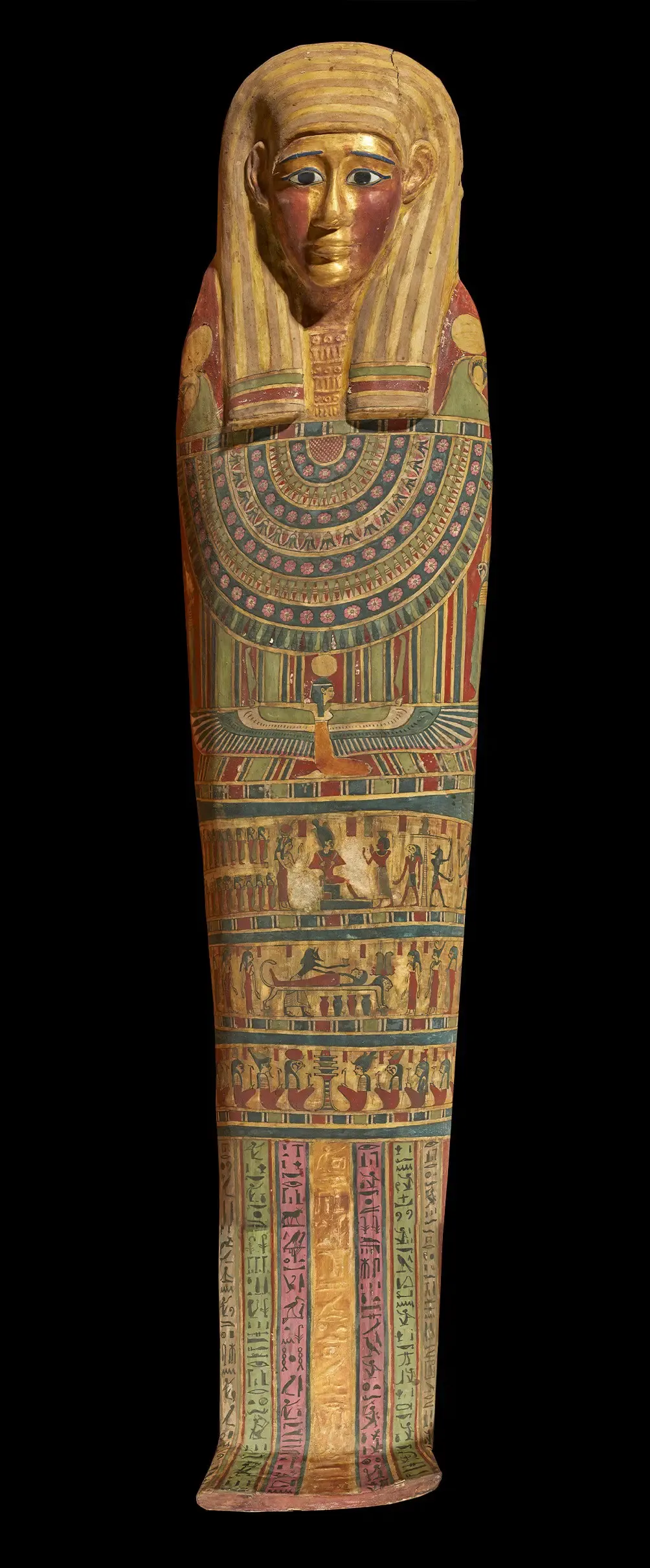
In this study, it was demonstrated that the body of this mummy was extensively decorated with 49 amulets, carefully positioned in an intricate arrangement of three columns between the folds of the wrappings and inside the body cavity of the mummy. These included the Eye of Horus, the scarab, the ankh amulet of the horizon, the placenta, the Knot of Isis, and others. Many were made of gold, while some were made of semi-precious stones, faience, or faience. Their purpose was to protect the body and give it vitality in the afterlife,” said study lead author Dr. Sarah Saleem, a professor at the Faculty of Medicine of Cairo University, Egypt.
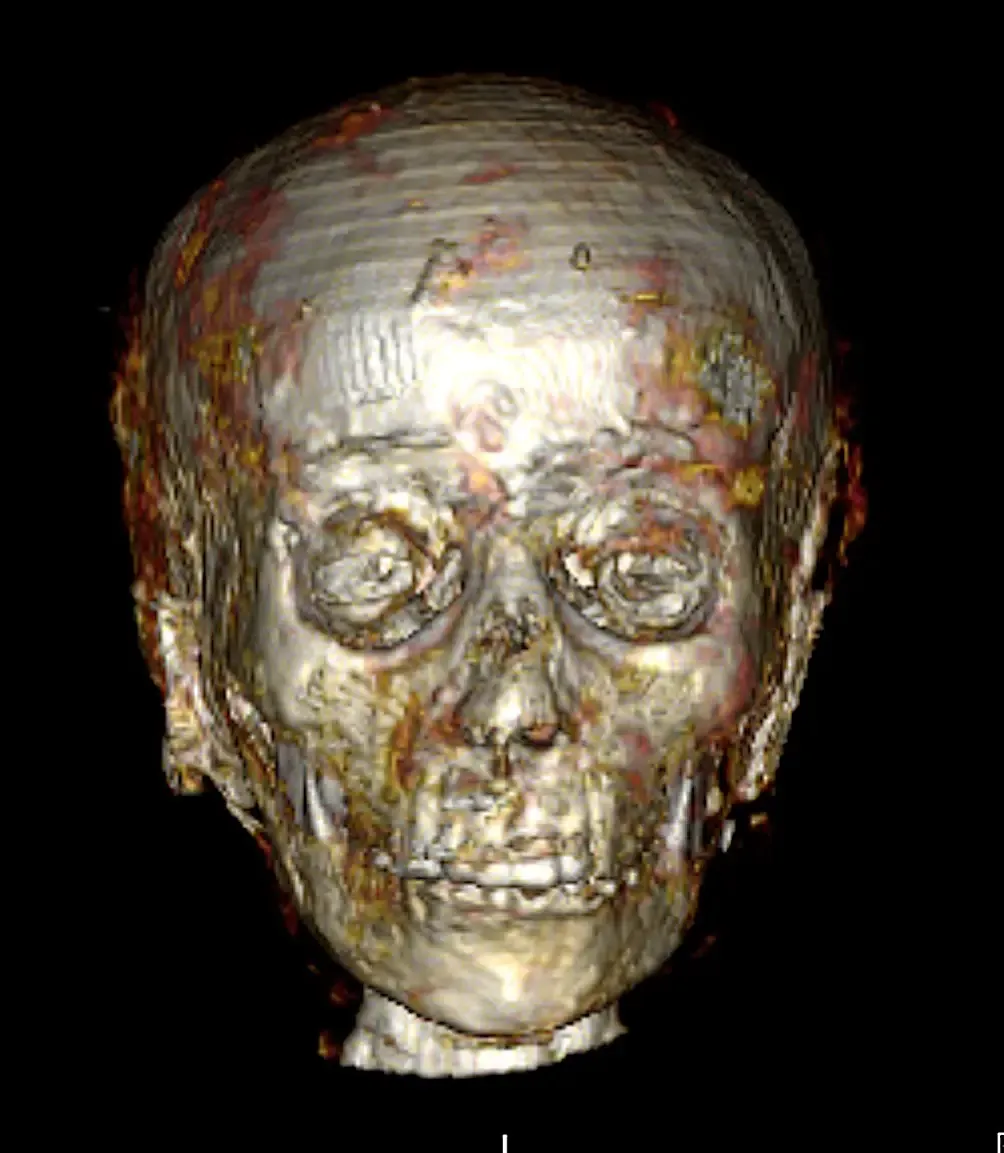
The tomb known as the “Golden Boy” was found in 1916 in a cemetery dating back to 332 to 30 BCE in Naga el-Hassaya, southern Egypt. However, it remained unexamined and was kept in the basement of the Egyptian Museum in Cairo until the present study. The museum’s basement is filled with numerous mummies that have been stored away for decades after the great excavations of the 19th and early 20th centuries without ever being studied or displayed.
Two coffins were used to encase the mummy: an outer coffin inscribed with Greek writing and an inner wooden sarcophagus. The mummy itself was adorned with a gilded head mask, a colorful cartonnage that covered the front of the torso, and a pair of sandals. The soft internal organs, except for the heart, had been removed through an incision, while the brain had been extracted through the nose and substituted with resin.
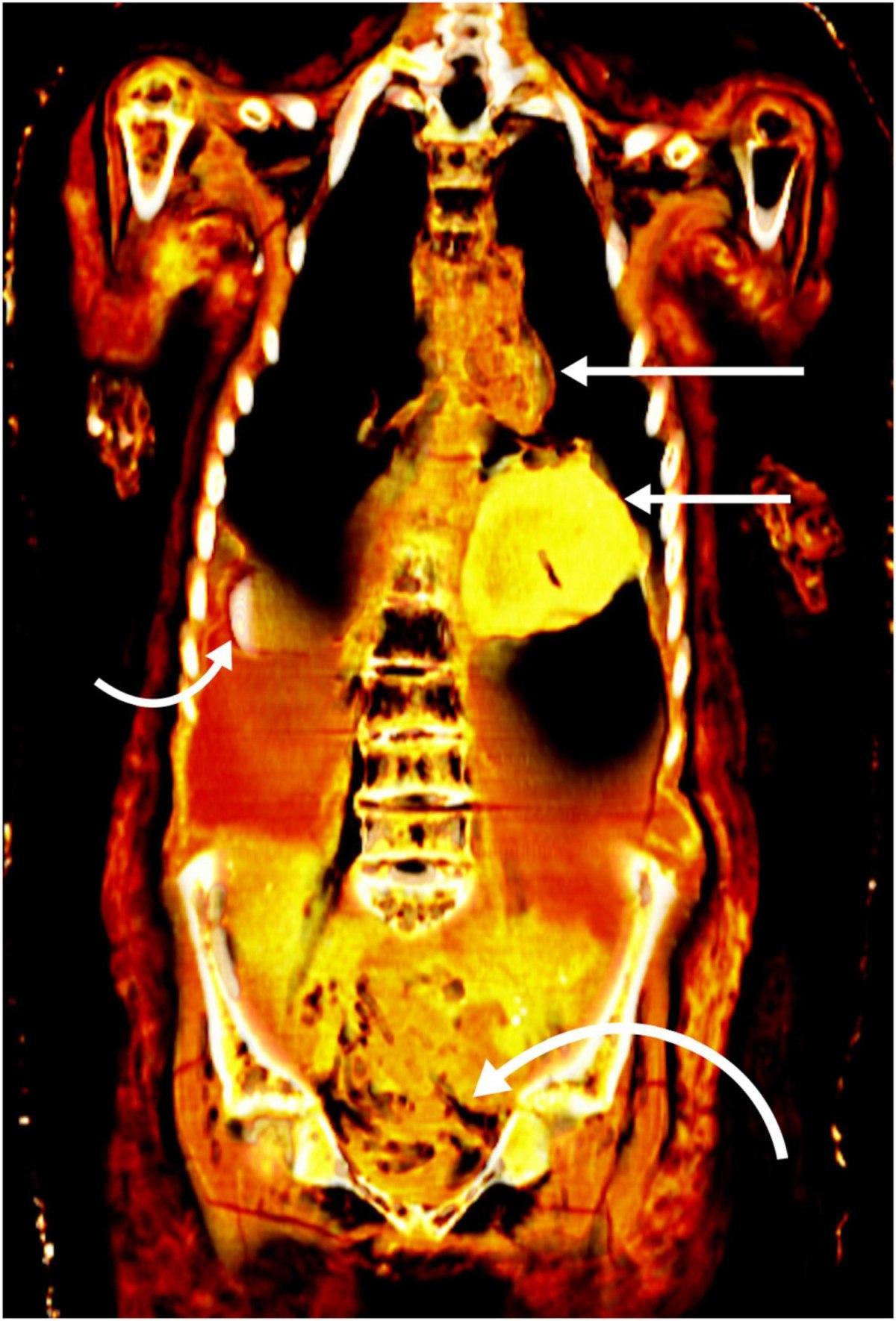
According to ancient Egyptian mythology, the boy was supposed to wear white sandals to be pure and clean before reciting its verses,” explained Saleem.
Based on the CT scans, the experts concluded that the boy, who had not been circumcised and measured 128 cm in height, had passed away from natural causes. Analysis of the degree of bone fusion and non-erupted wisdom teeth suggests that he was likely between 14 and 15 years of age. The teeth were in excellent condition, with no signs of tooth decay, tooth loss, or periodontal disease.
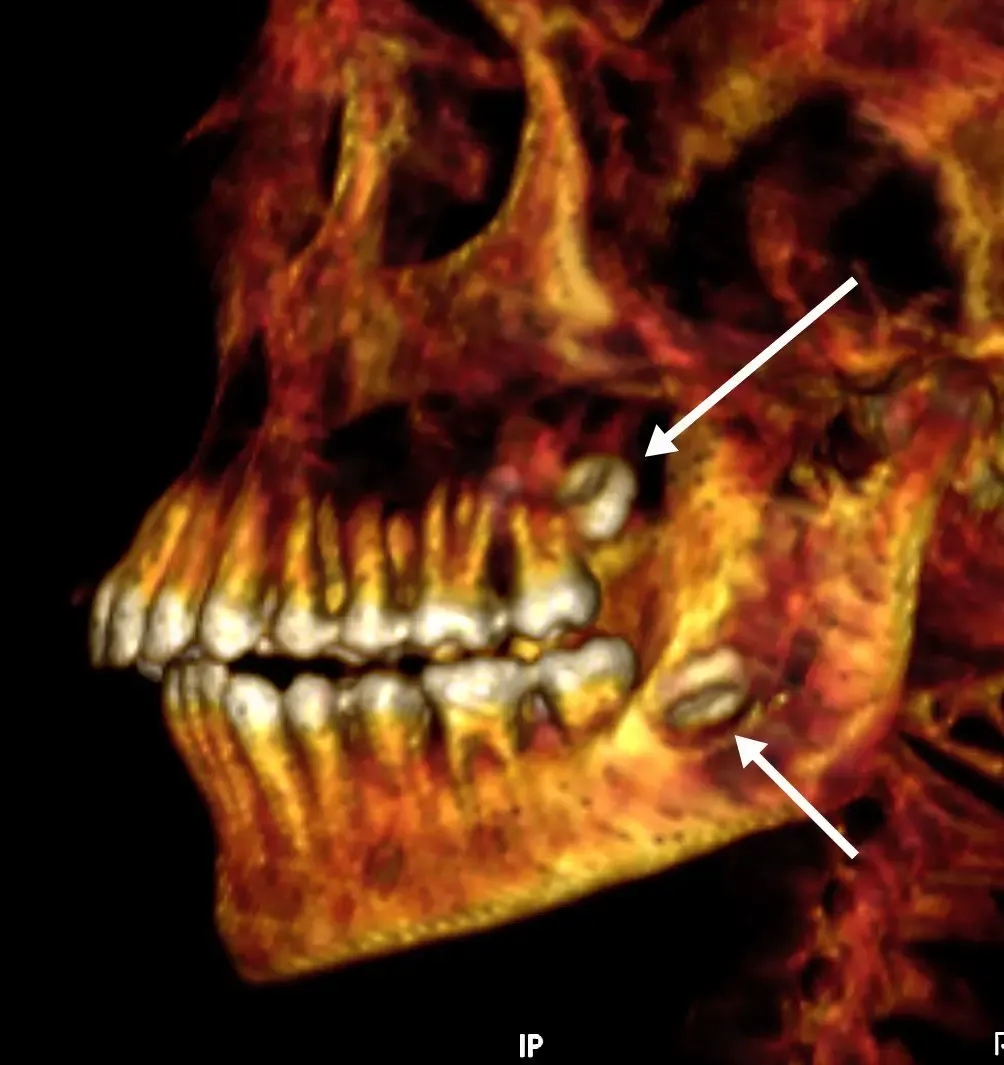
The ancient Egyptians were intrigued by the mysteries of the universe. They believed in the power of elements and celestial phenomena, which they used to interpret sacred and symbolic events. The benefits of elements and celestial objects were believed to guide the decisions made by leaders at the time, like the pharaohs of the New Kingdom such as Ahmose, Amenhotep I, and Ramses the Great. The knowledge of elements also influenced practices in each visit to the sacred forests,” explained Salim.
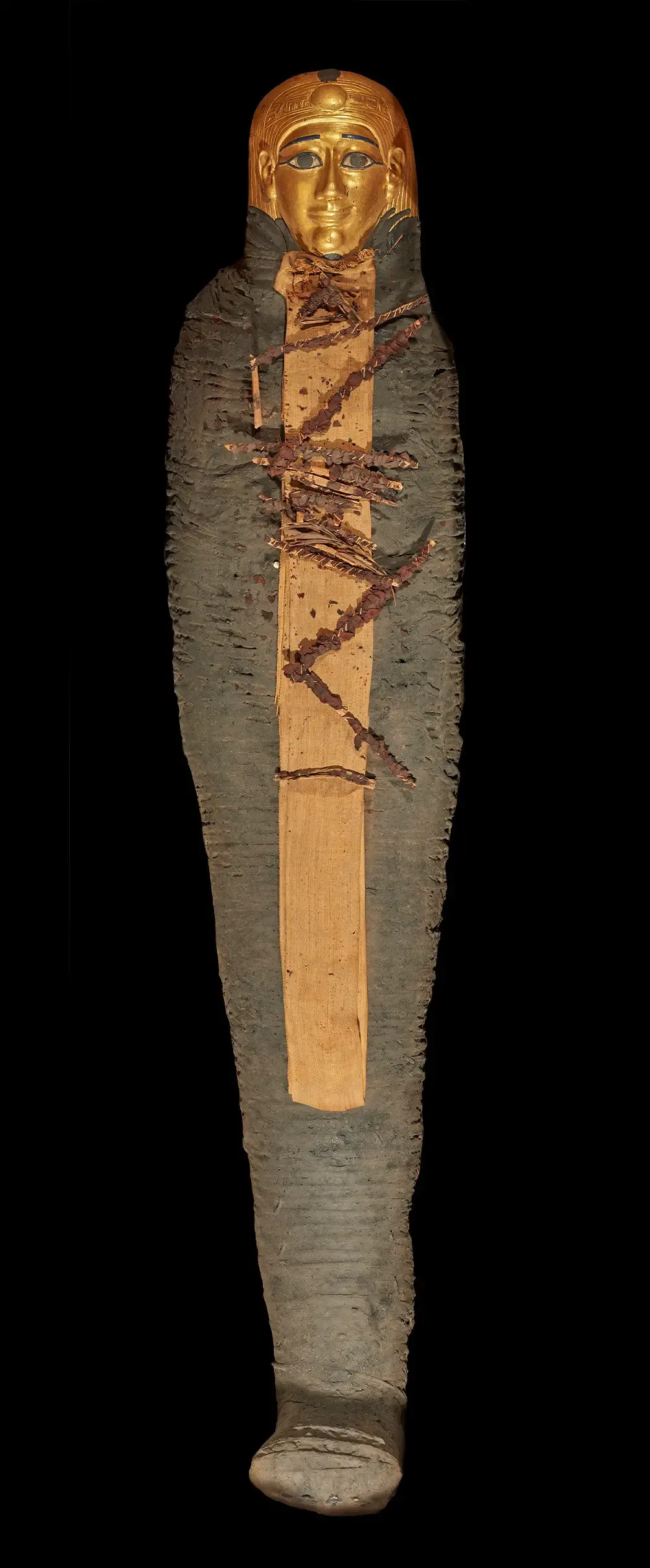
Researchers have discovered evidence of a wise range of beliefs held in ancient Egypt. This includes a golden tongue leaf placed in the mouth to ensure the ability to speak in the afterlife and a two-fingered amulet positioned near the penis to safeguard the embalming incision. Other amulets, such as the Isis Knot, were intended to invoke the protection of the goddess Isis, while a scarab amulet aimed to provide balance and stability. Double falcon and ostrich plume amulets represented the dual aspects of spiritual and material life. Within the symbolic cavity, researchers found a golden scarab beetle, of which they created a 3D print.
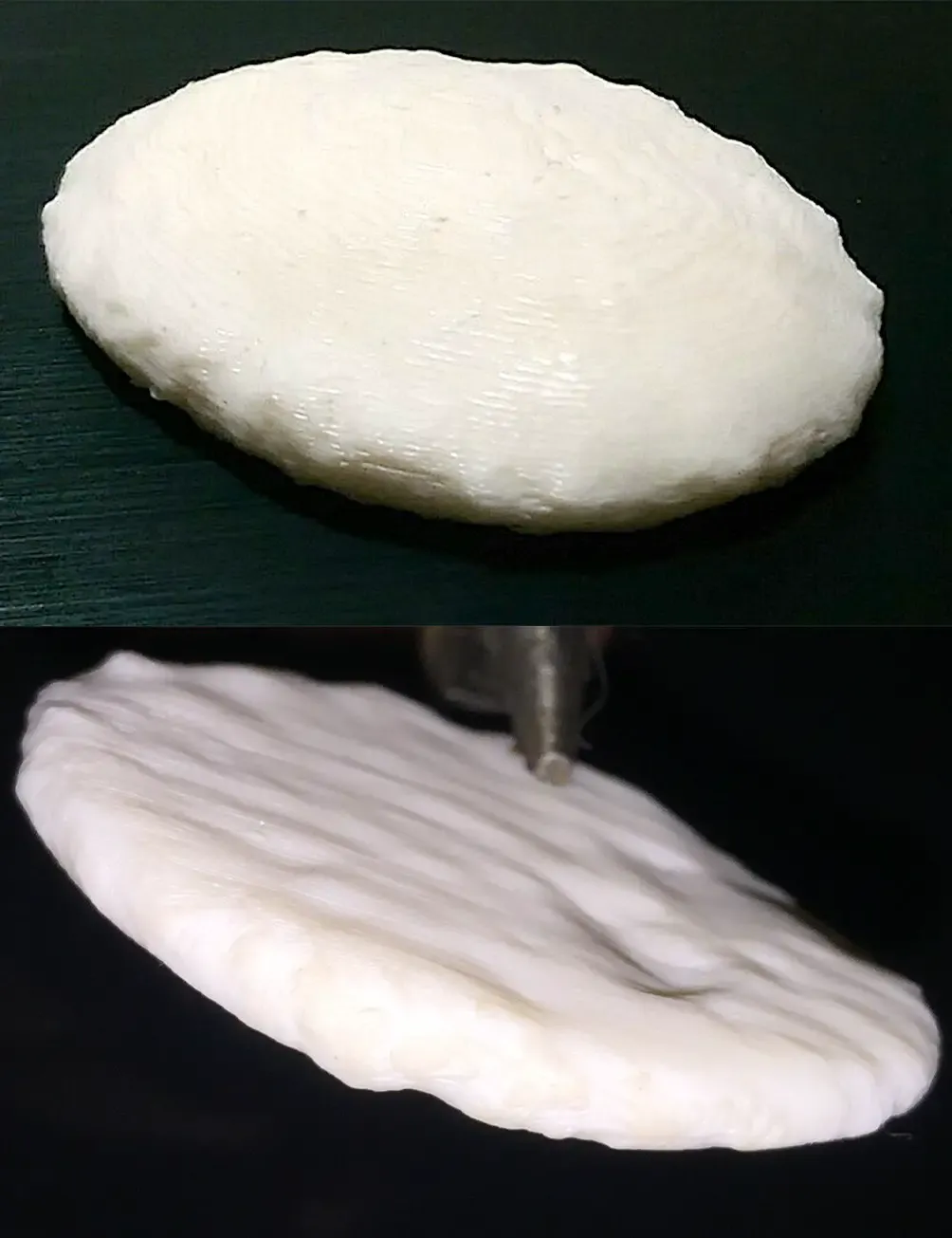
The hot desert is mentioned in chapter 30 of the Book of the Dead: it was important in the afterlife journey during the deceased’s judgment and weighing of the heart against the feather of the goddess Maat. The heart scarab ensured the heart on Judgment Day, so as not to bear witness against the deceased. It was carefully placed inside the torso cavity during mummification to substitute for the heart if the body was ever deprived of this organ,” explained Salim.
As a result of these fascinating findings, the curators at the Egyptian Museum have chosen to relocate the mummy to the primary exhibition hall and refer to it as the “Golden body.” In this new location, visitors can observe the mummy alone with the CT images made and a 3D-printed replica of the heart scarab amulet, providing an up-close experience of the wonders of ancient Egyptian culture.